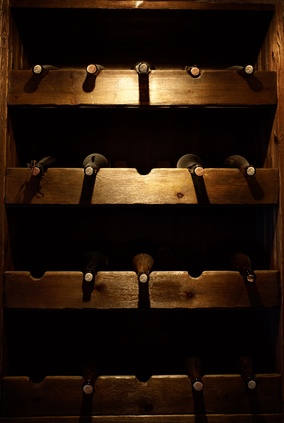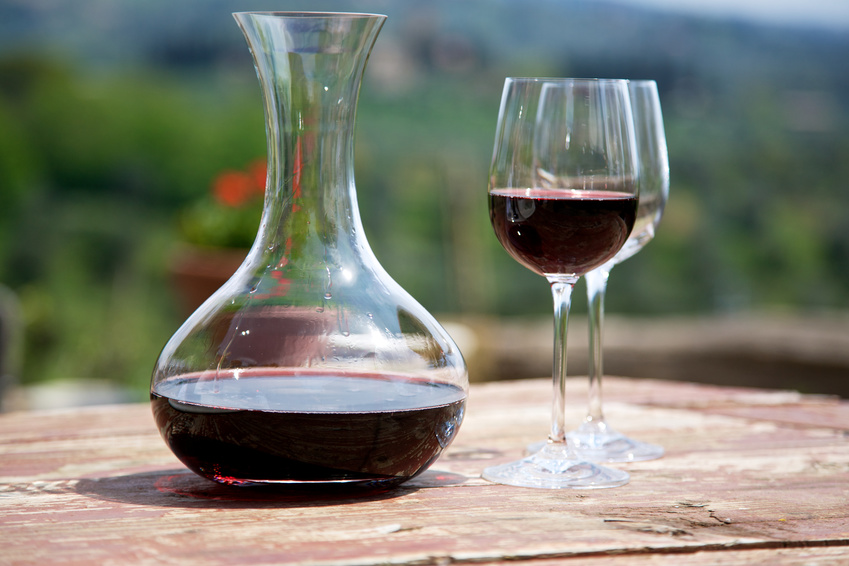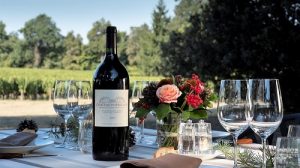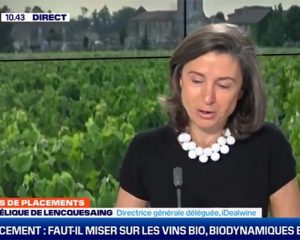
Are you just getting into wine and want to make the most of your tasting sessions by learning the basics of oenology? This article is written for you! In 10 simple questions, it covers the main themes of wine for beginners.
Why is wine red, white or rosé?
This is surely one of the first questions to ask about wine: why are there three colours? Contrary to what you might think, it doesn’t depend exactly on the grape variety used. Whether the grapes are white or red, the juice is always white. The different colours of wine are explained by the maceration of grape skins in the juice during fermentation. It’s particularly the anthocyanins – soluble pigments in the grape’s skin – that are responsible for a wine’s red hue. As for the intensity of the colour, different factors play their part, such as the grape variety, the vine’s yield, the terroir and the climate, the wine’s vinification, maturation, sugar content and, finally, its age.
Apart from the specific case of Champagne, rosé wine is not actually a blend of red and white wine! This is, as before, a question of maceration, following the same principle as red wine except much shorter.
All of this means that it’s possible to make white wine from red grapes (by not macerating the skins in the juice), though the reverse is not true. Indeed, macerating the skin of white grapes could never give us red wine – rather, we are presented with wine of a more orange hue.
If you’d like to read more on this topic, you can read our article ‘Why is wine red, white or rosé?’ here.
What is wine made up of?
This question might be asked a little less often, but it is perfectly legitimate: what is the chemical make-up of wine? Wine is mainly made up of around 85% water and 12-16% alcohol (mostly ethanol, but also glycerol, sorbitol, butylene glycol and methanol). There are also sugars (glucose and fructose), acids (tartaric, citric, ascetic, lactic and malic), and phenolic composites (tannins and anthocyanins). In addition, wines contain mineral substances (anions – negative ions – cations – positive ions – and metals), notably potassium, sulphur, phosphorous, and chlorine, as well as various organic substances.
Why are some white wines sweet?
The first time you ever tried a sweet wine or a dessert wine, you probably wondered where all that sugar had come from? Don’t imagine that the winemaker added sugar to their dry wine, the process is in fact a natural one!
During fermentation, sugar from the grapes turns into alcohol. In the case of dry wines, it’s almost all of the sugars that turn into alcohol, whilst for sweet wines, not all of the sugar is transformed, so a certain amount of residual sugar remains. This will happen when the grapes were more sugary to begin with – perhaps if they were harvested later, had noble rot (botrytis) or were raisined. This latter is a process – passerillage in French – by which the grapes are left out to dry before being vinified.

How is wine best kept?
As we start to buy bottles that aren’t to be consumed straight away, the question of how to keep them is raised. The main elements to take into account are temperature (ideally between 12 and 13°C), humidity (70-75%), darkness, and an absence of vibration. And the bottles should absolutely be kept on their side in order to keep the cork damp – this stops it from drying out and become loose or even fall into the bottle.
Why do some bottles need to be aged and some not?
It might seem confusing: this Bordeaux wine should be aged for over ten years whilst this other one from Beaujolais or the Loire is to be enjoyed straight away? How do you know which wines should be aged and which ones should be opened straight away? As you might expect, this isn’t a simple question to answer, as there are several factors to consider. And there aren’t any strict facts, only general rules with a few exceptions! Some wines are produced with the idea of being enjoyed quite quickly, ‘in the freshness of the fruit’, whilst others need to be kept in order to flourish and develop all their complexity.
Largely, the wines to be enjoyed quickly are those that are not so powerful, fruity, are less complex and have a certain freshness. At the other end of the spectrum, wines to be aged will be very concentrated, balanced between body and freshness and have often been long matured. They are also often from fine terroirs that require time in order to express all their features. Concentration, which is one of the main elements defining a wine’s ageing potential, varies according to the region, the grape variety (Cabernet Sauvignon is, for example, more suitable to age than Gamay or Jacquère), and the winemaker’s work – smaller yields and long vinification for a better concentration.
Generally speaking, some appellations will be more directed towards cellaring wines (Bordeaux, Burgundy, Rhône) whilst other appellations produce more wines that are ready to drink (Beaujolais, Loire, Alsace). But this is only a general rule to be taken with a pinch of salt, since at the heart of each region there are very different styles depending on the appellations and the winemakers. And even within one domain, there can be both kinds of cuvées produced. The best thing to do is to research the specific chosen cuvée, perhaps directly from the domain, or from iDealwine!
Don’t forget that, depending on the vintage, the same wine can have totally different ageing guidelines (for example, a 2010 might keep much better than 2013). So it’s important to take note of your vintages.
Do you need to decant and aerate your wines?
This is a question that can have varying responses depending on who you ask! Our advice tends to be that, if in doubt, it’s best not to decant, this being potentially risky for more fragile wines such as mature vintages. Opening the bottle a few hours in advance before aerating it well once in the glass is usually enough. You might also want to simply place the bottle vertically two days before tasting, so that the deposits stay at the bottom, and then serve the wine carefully without tipping the bottle too much.
This question usually comes up because it is often necessary to aerate a wine, for a few hours or even just a few minutes, in a carafe or simply by opening the bottle. There are two possible reasons for doing this: to ‘relax’ a young wine, dissipating any reduction aromas and softening its strength, or it could be in order to ‘open up’ a mature wine, separating it from the deposits.

How do you recognise when a wine is faulty?
Do you dread that moment in the restaurant when it falls on you to taste the wine? Perhaps sometimes you have a concern about the quality of the wine, especially if it tastes corked, but aren’t sure about mentioning it to the sommelier for fear of being wrong? You can tell that a wine is corked if it has a pronounced odour of mould and humidity: quite a distinct smell. This fault comes from the chemical treatment of the cork with tri-chloro-anisole (TCA).
Another potential fault in a wine is known as reduction: this is a rotten, musty smell, almost like hung meat. This is a sign that the wine has been closed up for a long time and deprived of oxygen. But don’t worry, the wine isn’t spoilt! These unpleasant odours will usually disappear quickly as the wine aerates.
Finally, a wine can sometimes be oxidised, giving off aromas of overripe apples, cider and nuts. However, this is not a fault in wines where such aromas are developed intentionally, like in the case of yellow wines.
Why can wines be priced so differently?
One way of understanding this is to look at the four elements that influence the quantity produced: the yield, the terroir, the winemaker’s work and the quality of the vintage. Indeed, the quality of the wine depends largely on the winemaker’s work and the yields: smaller yields mean that the grapes are more concentrated, therefore of higher quality (their substance is more diluted when they are more abundant). Thus, it follows that in order for a winemaker to be able to produce lower yields for better wine, they have to sell their produce for a higher price (since they’re not making large quantities). The quality of a terroir is strongly linked to the price per hectare of vines, and a winemaker setting up on a well-reputed terroir will be able to acquire a much smaller surface area. And a smaller surface area means lower production, so if a winemaker who owns 3 hectares wants to get by, they’ll have to sell their wine for much higher prices than someone managing hundreds of hectares. The work they carry out also has an effect on the price: an organic domain, for example, requires more human labour and runs a greater risk of losses. Equally, a domain with little mechanisation in place will cost more to run in terms of salaries paid. The chosen élevage process also makes a difference: new casks certainly aren’t cheap, and very long maturation periods can potentially cause cash flow problems.
Of course, this isn’t always the case, and some domains are simply very good at getting their wines into the spotlight thanks to a fallible reputation and global demand.
Is a recent vintage not going to be as nice as a mature one?
As we’ve seen above, the answer to this is no, because it depends entirely on the kind of wine in question. Some wines will be better enjoyed within 2 years (a lot of aperitif rosés, for example), whilst for others it would be a terrible mistake to open them too soon. The most important thing to know is when the wine is going to reach its peak, and for how long this peak will last. Don’t forget that, at iDealwine, all of our bottles come with information about the ideal drinking date.
What is a second wine?
Apart from the exception of Bordeaux, the idea of a second wine has been around for more than a century and can be considered a good introduction to fine wine, a way to get a flavour for the terroir of a prestigious domain, whilst not quite reaching the levels of the finest wine. The second wine is often made from younger vines, plots of a slightly lesser quality, or lots destined for a fine wine that is later downgraded.
If you want a hand when choosing wine, take a look at the ‘Help me choose‘ tab on the iDealwine website.



